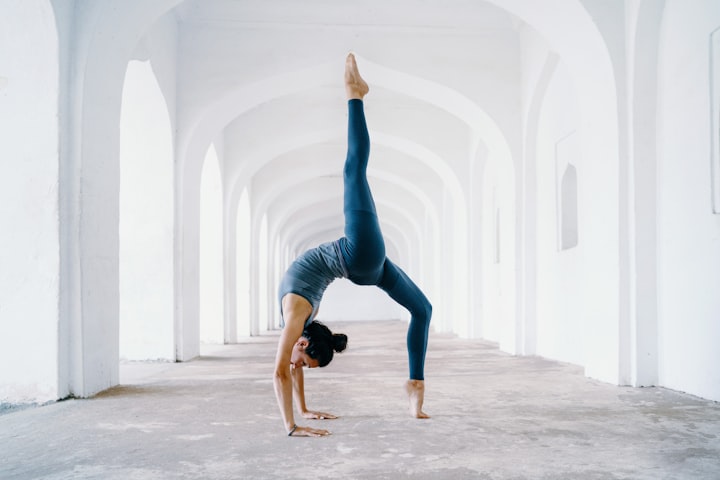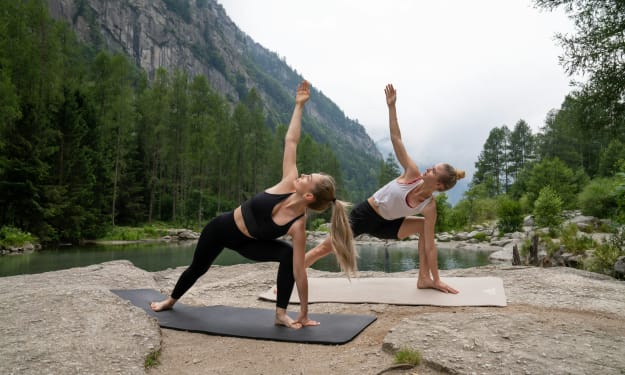How to Get More Flexible for Yoga
Five simple tips to help you in your flexibility journey

One of the biggest myths of yoga is that you need to be flexible to practice it. You don’t. In fact, you should practice yoga to get more flexible.
With that being said, flexibility is a complicated topic and there are a variety of factors that affect it. Practicing yoga regularly will increase your flexibility, but here are some other tips that might help along the way.
1. Stay hydrated
You don’t need anyone to tell you that drinking more water is a good thing. But staying properly hydrated may also have a direct effect on your level of flexibility.
Being dehydrated, as many people are, can result in stiffness and decreased range of motion. Drinking plenty of fluids throughout your day can help your muscles stay limber enough to respond to flexibility training.
Instead of the eight glasses of water rule, try to drink about one half ounce or one ounce per pound of body weight. If you weigh 125 pounds, that’s between 62.5 and 125 ounces of water. You’ll also want to drink more fluids when working out vigorously.
2. Warm up your muscles
Cold muscles are less flexible muscles. While you may know that intuitively, there’s also science to back it up. In other words, you’ll want to make sure your muscles are properly warmed up before any serious stretching.
You can try gentle yoga poses and dynamic movements like sun salutations to warm up your muscles. These types of exercises increase tissue temperature, which can increase flexibility and reduces the chance of injury while stretching.
This is also why you may be more flexible in warmer environments. Try hot yoga, or practice yoga after a warm shower or bath. In cooler temperatures, make sure to keep your muscles warm with full-length pants and a sweater.
3. Practice consistently
Getting more flexible isn’t an overnight journey, but it is an achievable goal — as long as you practice consistently. Making flexibility training a regular habit is critical to improving flexibility down the road.
One meta-analysis of more than 20 studies found that stretching at least five days a week for at least five minutes per week using static stretching was enough to benefit range of motion, or flexibility.
The static stretching portion means you may be better served by holding poses for longer periods of time, rather than quickly moving through poses in a vinyasa flow class. Your power and vinyasa classes should still be a part of your routine, but try to add in static stretches and longer holds for the best results.
4. Learn to de-stress
Stress triggers the same reaction in your body as being in a threatening situation. When you’re in fight or flight mode, your body causes certain muscles — like the psoas — to tighten, according to Psychologies. This tension can feel like stiffness and inflexibility.
Because of that, it’s useful to incorporate calming and stilling practices in your routine. Calming practices can help you let go of the tension in your body and possibly increase your range of motion.
Allocate a bit of time each day or week for meditation, a peaceful stroll around your neighborhood, or breathing exercises. Try getting a massage now and then. When you come to your mat to do yoga, make it a goal to try to release the stress and tension of the day before you begin your practice.
5. Be gentle with yourself
By far the most important thing you can do when trying to improve your flexibility is to be gentle and kind to yourself. The quickest way to derail any physical exercise or practice is to cause an injury. You don’t want that.
In any yoga pose, you never want to feel pain. A gentle sensation of stretching is fine. But if getting into and holding a pose hurts, you’ll want to back off immediately. Go slowly, listen to your body, and make sure that you keep within your own limits.
It’s also important to throw out any expectations of what a pose is supposed to look like. Yoga is not about achieving a pose, but what you learn on the journey there.
About the Creator
Mike Peterson
Poet. Yoga teacher. Nature enthusiast.






Comments
There are no comments for this story
Be the first to respond and start the conversation.